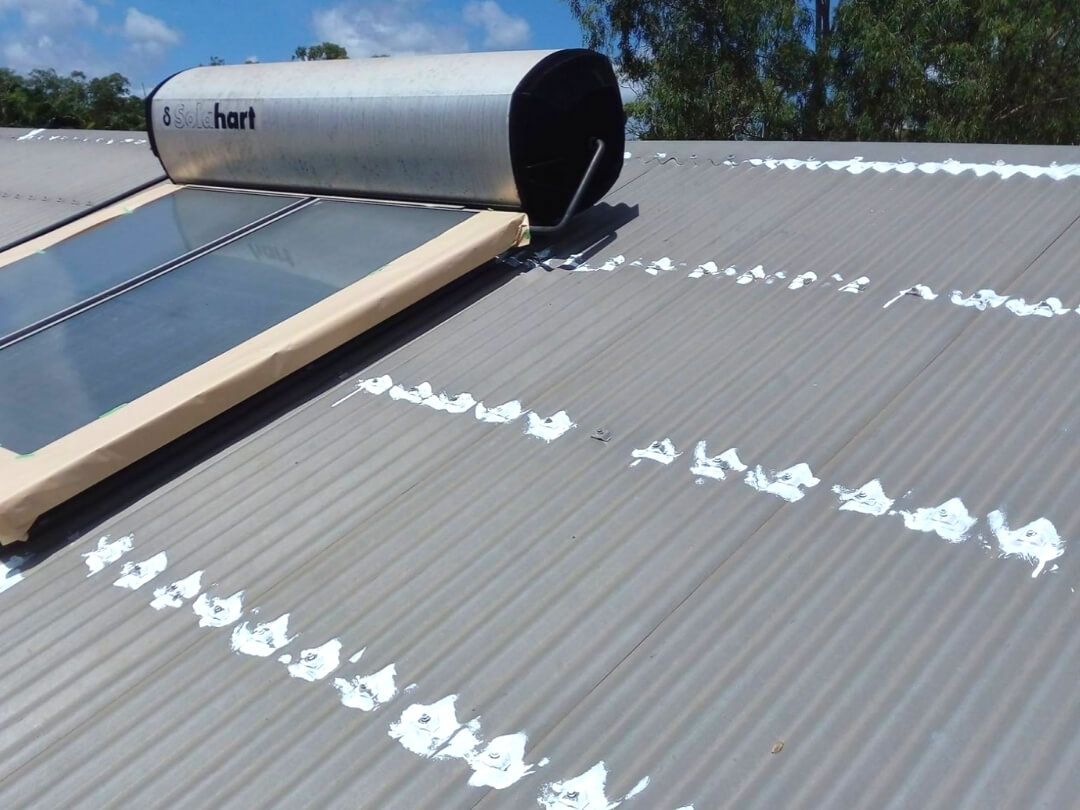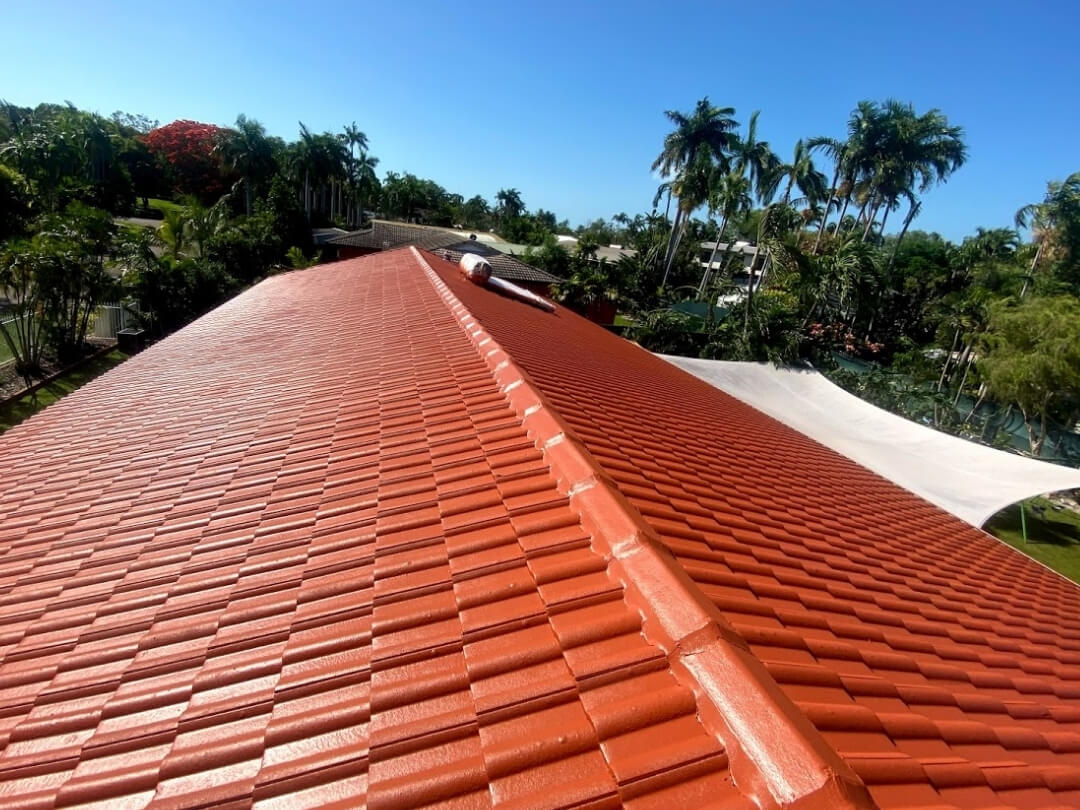Roofing Company | Exploring the Benefits of Various Roof Ventilation Types

Roof ventilation is vital in maintaining a healthy and comfortable home environment. Allowing the proper exchange of air helps regulate temperature, control moisture levels, and enhance energy efficiency. This blog delves into roof ventilation types and their numerous benefits. Whether you're a homeowner looking to improve indoor air quality or seeking ways to reduce energy costs, understanding the advantages of different roof ventilation types is crucial. Join us as we explore the benefits that ridge vents, soffit vents, gable vents, turbine vents, and solar-powered vents bring to your home, and discover the optimal ventilation solution for your specific needs.
Importance of Roof Ventilation
Proper roof ventilation is a luxury and a necessity for a healthy and comfortable home. It plays a crucial role in maintaining optimal indoor air quality and preventing many problems from inadequate ventilation.
A healthy home starts with proper roof ventilation. Without adequate airflow, moisture can become trapped in the attic, leading to the growth of mold and mildew. These fungi not only deteriorate the roof's structural integrity but also pose significant health risks to the inhabitants. Roof ventilation helps mitigate these issues and create a healthier living environment by allowing fresh air to circulate.
Inadequate roof ventilation can lead to many problems that affect the roof and the overall home. Excessive heat buildup in the attic can cause the shingles to deteriorate faster, shortening their lifespan and potentially leading to costly repairs or replacements. Moreover, trapped heat can permeate the living spaces below, making it harder to maintain comfortable temperatures and strain cooling systems. In colder climates, inadequate ventilation can contribute to ice dams, which can damage the roof and cause leaks. These problems highlight the importance of proper roof ventilation in preventing potential structural damage and maintaining the integrity of the entire home.
Energy efficiency and cost savings are significant considerations for any homeowner. Roof ventilation plays a vital role in this aspect as well. During hot summers, an adequately ventilated roof helps to expel the hot air, reducing the temperature in the attic and decreasing the load on the cooling system. This, in turn, leads to energy savings and lower utility bills. Similarly, in colder months, proper roof ventilation prevents excessive moisture buildup and reduces the risk of condensation, which can contribute to insulation degradation. By keeping the attic dry and well-ventilated, roof ventilation helps maintain the effectiveness of insulation, resulting in energy efficiency and potential savings on heating costs.
Ridge Vents
Ridge vents are an essential component of roof ventilation systems installed along the roof's ridge line, allowing hot air and moisture to escape from the attic space. They work on the principle of passive ventilation, utilizing natural convection currents to create an upward airflow. Ridge vents consist of a low-profile, continuous vent that runs along the length of the roof's ridge. They have openings or slots along their length, allowing hot air to escape while preventing the entry of rain, snow, or pests. One of the critical benefits of ridge vents is improved air circulation, which helps to regulate temperatures and reduce the strain on cooling systems.
Additionally, ridge vents aid in moisture control, reducing the risk of condensation, mold, and rot. Ridge vents are compatible with various roof types, making them a versatile choice for ventilation. However, it is essential to consider factors such as roof pitch and climate when determining the size and number of ridge vents needed for adequate ventilation.
Soffit Vents
Soffit vents are essential for roof ventilation systems by providing an intake point for fresh air into the attic space. They are strategically placed along the eaves or soffits, drawing in fresh air from the outside. This new air influx helps lower the overall temperature in the attic space, reducing the strain on the cooling system and preventing heat buildup. Additionally, soffit vents help prevent moisture buildup and condensation in the attic, creating a balanced environment that reduces the risk of mold, mildew, and rot. Therefore, soffit vents are essential for roof ventilation systems, promoting air intake into the attic, preventing heat buildup, and controlling moisture levels.
They are handy for homes with limited roof space or where other types of ventilation, such as ridge vents, are not feasible. They are compatible with different roof materials, such as asphalt shingles, metal, or tile roofs, and effectively provide ventilation for structures like garages or sheds. Soffit vents are:
- Essential components of roof ventilation systems.
- Promoting air intake into the attic.
- Preventing heat buildup.
- Controlling moisture levels.
They are a practical, effective solution for maintaining a well-ventilated, healthy attic space.
Gable Vents
Gable vents are a type of roof ventilation that is installed in the gable ends of a building. They allow hot air to escape the attic, promoting effective air exhaust. They work by taking advantage of the natural convection process, which draws hot air toward the gable vents and expels it to the outside. Gable vents offer several benefits regarding roof ventilation, such as their effectiveness in air exhaust, removing excessive heat from the attic, and regulating attic temperature. In addition, by allowing hot air to escape, they help to prevent the attic from becoming excessively hot, which can affect insulation and increase cooling costs.
Gable vents are an effective solution for roof ventilation, providing efficient air exhaust and helping to regulate attic temperature. They should be positioned near the highest point of the gable ends to maximize hot air exhaust. The number and size of gable vents depend on the attic's size and the structure's overall ventilation needs. Proper installation techniques, such as sealing and protection against water infiltration, should also be followed to maintain the roof's integrity. Gable vents are an effective solution for roof ventilation, providing efficient air exhaust and helping to regulate attic temperature. By incorporating gable vents into a roof ventilation system, homeowners can enhance the overall comfort of their living space and protect the integrity of their roof and attic.
Turbine Vents
Turbine vents are a unique roof ventilation system that harnesses natural wind energy to facilitate air exchange in the attic space. They consist of a dome-shaped structure with fins or vanes and a central rotating assembly. The fins or vanes catch the breeze as the wind blows over the vent, causing the significant body to rotate. This rotational movement creates a suction effect, drawing air out of the attic and expelling it to the outside. Turbine vents are particularly effective in areas with consistent wind patterns, as they can remove hot air, moisture, and pollutants from the attic, maintaining a well-ventilated and healthier environment.
Additionally, turbine vents can help reduce energy costs by alleviating the workload on air conditioning systems. Turbine vents are suitable for specific roof types and climates and are typically installed near the roof's peak to take advantage of the natural wind flow. They are energy-efficient solutions that promote air exchange and help maintain a healthier indoor environment, but their suitability depends on the specific roof type and climate conditions. By considering the wind patterns and requirements of the structure, homeowners can determine if turbine vents are a suitable option to enhance roof ventilation and improve overall comfort.
Solar-Powered Vents
Solar-powered vents are an innovative and eco-friendly roof ventilation solution that harnesses the sun's power to promote air exchange in the attic space. Solar panels on the vent collect sunlight and convert it into electrical energy, used to operate the fan or motor that drives the ventilation process. Solar-powered vents offer numerous advantages, including reduced energy consumption, lower utility costs, and sustainable operation. They are suitable for various applications, providing ventilation in residential homes and other structures where access to electrical power may be limited or environmentally undesirable. Solar-powered vents offer a greener alternative for maintaining a well-ventilated and comfortable living space while contributing to a more sustainable future.
Comparison and Considerations
Each roof ventilation type offers unique benefits:
- Ridge Vents: Improved air circulation, moisture control, and compatibility with various roof types.
- Soffit Vents: Effective air intake, prevention of moisture buildup, compatibility with different roof materials.
- Gable Vents: Efficient air exhaust, regulation of attic temperature, suitable for sloped roofs.
- Turbine Vents: Harnessing natural wind energy, passive ventilation, reducing energy costs.
- Solar-Powered Vents: Eco-friendly, energy efficient, reduced utility costs through solar power utilization.
Factors to consider when choosing a ventilation type:
- Roof type and design: Some ventilation types are more suitable for specific roof types, such as sloped or flat roofs.
- Climate: Consider your region's prevailing wind patterns and temperature ranges to determine the most effective ventilation option.
- Attic size and layout: The size and design of the attic space can impact the ventilation requirements, influencing the choice of ventilation type and quantity.
- Energy efficiency: Assess each ventilation type's energy efficiency and cost-saving potential to align with your sustainability goals.
- Professional advice: Consult with roofing or ventilation experts who can assess your needs and provide personalized recommendations.
It is crucial to consult professionals for personalized recommendations. A roofing professional or ventilation expert can assess the unique characteristics of your home, including its roof design, climate, and attic space, and guide the most suitable ventilation type. In addition, they can offer expert advice on installation techniques and ventilation system design and ensure compliance with local building codes. Seeking professional input will help you choose the most effective and efficient ventilation solution for your home.
Things To Do In Winnellie, NT Australia
Winnellie, NT Australia News

